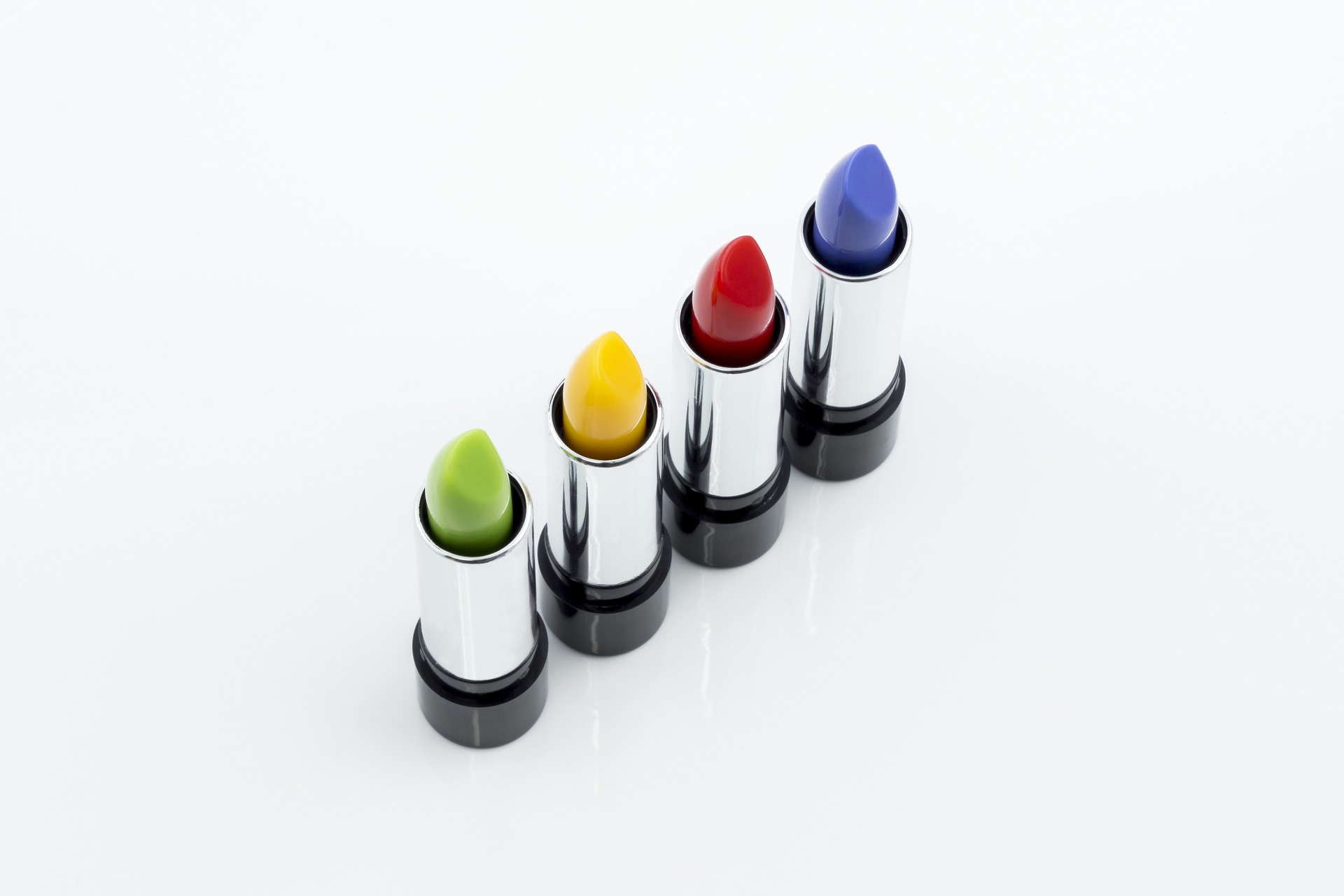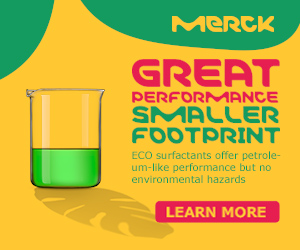Cosmetics & Personal Care
Hot topics in cosmetics 22nd October 2018
By our Editorial Team
Top insights from key speakers at in-cosmetics North America and Asia 2018, as they provide their views on hot topics in cos

Top insights from key speakers at in-cosmetics North America and Asia 2018, as they provide their views on hot topics in cosmetics.
We don’t need to tell you that cosmetics is big business! According to Reuters, the global cosmetic products market was valued at $532.4 billion in 2017, and is expected to reach $805.6 billion by 2023, registering a CAGR of 7.14% during the period 2018–2023. Irrespective of political events and economic turmoil, the global cosmetics industry is one sector that remains largely impervious to the ups and downs. There is simply a continuing and growing usage of products by women, and increasingly by men, across the world.
The in-cosmetics brand, of which Chemicals Knowledge is a proud media partner, has established itself in recent years as the leading events for cosmetics and personal care ingredients. Celebrating R&D excellence, these events are viewed as launch pads for innovation in ingredients and technology, shaping global trends in the cosmetics industry. Chemicals Knowledge caught up with some of the speakers talking part in the conference programmes of in-cosmetics North America and in–cosmetics Asia, both taking place in the final months of 2018, to hear their views on hot topics in cosmetics.
Natural products:
|
Can premium natural skincare compete with conventional skincare?
Stacey Fraser, Concept Development and Innovator at Nature’s Blueprint Consultancy Services, says…
In a word, yes. I’ve been working in the natural skincare world for over 15 years and in that time, we have gone from a small range of ‘natural’ ingredients to some of the most, high end, sophisticated functional and efficacy proven actives available. Many years ago, I designed a ‘natural’ skincare product that was inspired by a leading conventional beauty house brand, encapsulating an oil blend and vitamins into booster capsules. This product is still a #1 seller in the natural category globally.
We can now take the latest on-trend beauty products and reverse engineer them to create the most natural equivalent, and this is what consumers are asking for. The drive for ‘natural’ is in full demand as people seek products that are pure, trustworthy and offer great efficacy, as well as being sustainable and eco-friendly.
|
Three big issues when formulating organic
Belinda Carli, Director of Institute of Personal Care Science
Until recently, there were no natural volatile oils – but now there are. There were no suitable carbomer replacements – now there are. There was limited choice in good preservation at neutral pH, and hardly any surfactants – now there are. Going green isn’t as hard as it used to be, but there are still limitations.
#1: Marketing claims: If you want to make ‘natural’ and ‘organic’ your main claims, then you need to be certified. All certifiers have different rules, so determine at the start which certifier is going to suit your needs. Then, think how you are going to market your point of difference against competitors with certified organic products, and competitors who make organic claims but aren’t certified.
#2: Stability: It can be difficult to stabilize organic formulas over a prolonged shelf life, but it is essential to achieve this for regulatory purposes and consumer acceptance. Discuss these issues with your formulator and be prepared for R&D and stability programs before going to market.
#3: Suitable aesthetics: Being limited to organic, natural and naturally derived ingredients means you may need to compromise on skin feel. You may need to be flexible to enable the creation of a suitably commercial but certified organic product.
|
Multi-purpose products:
|
Dermocosmetics: The junction of skincare and health and wellness
Kayla Villena, Senior Research Analyst – Beauty & Fashion at Euromonitor International, says…
Dermocosmetics brands draw from their pharmaceutical background and technological advances that attract consumers drawn to functionality and benefits. Combined with the desire for medicated, clinical formulations with therapeutic benefits, consumers’ desire to improve the look and feel of skin, to have healthy skin and to address specific skin concerns are driving skincare in a direction that resonates with the general positioning of dermocosmetics.
Ageing remains a leading skin concern, but as consumers shift toward skin health and prevention, dermocosmetic brands are adopting stronger language that fights ageing. Products that address hyper-pigmentation and discolouration give ageing claims more specificity. New launches are addressing specific skin issues such as rosacea, hyperpigmentation and sun damage while general benefits of brightening the skin and reducing dark spots remain common.
|
Colour cosmetics in Asia: Premiumization, gender fluidity and active ageing
Sunny Um, Senior Analyst – Beauty and Fashion at Euromonitor International says…
Since 2017, Asia has held the position as the leading powerhouse behind global colour cosmetic sales. The region’s huge population, economic expansion and consumers’ increasing budget for ‘vanity spending’ has been driving this growth. Lip products and foundations/concealers are the most popular products in Asia. While BB and CC creams registered the fastest growth, foundations are unlikely to be eclipsed as consumers now buy variations of these products to wear on different occasions.
By 2022, colour cosmetics sales in Asia are expected to grow by 6% CAGR, as China overtakes Japan and Thailand, and Indonesia surpasses Taiwan and Hong Kong. Millennials in China, Thailand and Indonesia choose ‘high quality’, ‘hypoallergenic’, ‘natural or organic’ products, whereas those in Japan and Korea prioritize ‘value for money’ and ‘low price’. Asia is witnessing two consumer trends – the middle-class expansion in developing markets and the middle-class retreat and market saturation in developed countries. Expanding the consumer base beyond young women to men and older women, while providing skin care-infused colour cosmetics, will enable manufacturers to embrace all consumers in Asia.
|
Skin microbiome:
|
Skin microbiome research – limitations and opportunities
Dr Nava Dayan, President of Dr Nava Dayan LLC, says…
Various molecular and in-silico methods have been developed and employed in skin microbiome of research, but a number of key questions remain unanswered.
For example, what is a healthy microbiome baseline? What are the implications of microbial diversity and the shift from homeostasis to clinical manifestation? How do we select appropriate controls for studies? What is the best sequencing and quantification method to use? Can in vitro assays on isolated bacteria provide leads to clinical implications? Do preservatives in formulations affect the skin microbiome?
These and other questions are the focus of ongoing research that may shed light on this evolving area of interest.
|
Skin microbiome and cosmetics
Kausar Mali, Senior Principal Research Scientist at Microbiology Sciences, says…
For healthy skin, its natural mechanisms (hydration, nutrients, pH, antimicrobial peptides) play a crucial role in controlling microbial diversity and maintaining the balance and dominance of beneficial microbes. With the rise in consumer demand for more sophisticated, natural, age-defying cosmetics, as well as products to enhance the appearance of the skin to look younger, glowing, smooth, wrinkle and acne free, it is imperative to understand the relationship of skin microflora with visual facial signs of healthy skin.
We are conducting a 10-year study of 150 healthy men and women, looking at facial features (e.g. wrinkles, hyperpigmentation, porphyrins) and biophysical properties (e.g. barrier function, pH, elasticity), to explore how the skin microbiome composition changes with signs of skin health and to help target the development of microbiome-based beauty products.
|
Sustainability:
|
What are sustainable cosmetics?
Dr Barbara Olioso, from thegreenchemist.com, says…
Quite a few brands have started their exploration of sustainability with a focus on packaging. Packaging is highly visual and easy to understand, but focusing on just the outward form is not enough.
We must start with the sourcing of raw materials and their impact on the environment. Plant-derived ingredients require more resources and energy than petrochemical ones, but they are renewable and have consumer appeal. If using plant ingredients means increasing demand on natural resources, what green technologies can reduce environmental impact? How can we select raw material suppliers more in line with sustainability for the environment, the animal kingdom, and the populations that live in these environments?
Cold processing has gained popularity, along with clean energy like wind and solar energy. Formulating with a mind to save on energy and water is a growing trend, with some big names promoting more concentrated products that use less water.
There is no one way to go about it – the most important thing is to start the journey of exploration and innovation, like the great pioneers of the past.
|
Environmental safety
Dr Annelie Struessmann, Technical Regulatory Director at CONUSBAT Regulatory Services says…
The cosmetics regulatory frameworks are still not consistently addressing the environmental impact of cosmetic products. Cosmetic ingredients are often discharged into the sewage system and research shows they can be found in aquatic systems like lakes, oceans and rivers, as well as in soil. The potential risk of such contamination may include toxicity to aquatic organisms, flora and fauna, as well as bioaccumulation. Cosmetics packaging also contributes to microplastics and packaging waste, which can cause serious and fatal effects for aquatic life and birds.
Recently, the EU restricted, for the first time, two substances for use as cosmetic ingredients. The restriction applies to Octamethylcyclotetrasiloxane (D4) and Decamethylcyclopentasiloxane (D5) in wash-off personal care products in the EU. No wash-off products may contain more than 0.1% D4 or 0.1% D5. These restrictions demonstrate the importance of environmental safety.
REACH provides a list of chemicals restricted in cosmetic products for environmental reasons. The next step will see this list combined with existing annexes to enhance the cosmetic products regulation, which looks to control substances based on human health concerns.
|
Regulatory update:
|
Regulatory updates from ASEAN, China and EU
Marylene Zhan, Regulation Compliance Specialist at Reach24h Consulting Group China says… In July 2018, total retail sales of cosmetics reached ¥ 145.6 billion in mainland China, increasing from 13.3% a year earlier. There is tremendous potential and opportunity within China’s cosmetic industry. However, for brands trying to acquire general knowledge about cosmetic regulations and governmental management, it can be a complicated and time-consuming process, making applying for pre-market administrative approval difficult.
For example, in March 2018, China reformed the structure of its State Council and ministerial level departments. Whereby CFDA, AQSIQ and SAIC (State Administration for Industry and Commerce) were amalgamated to form the State Administration for Market Regulation. GAC now takes charge of entry and exit inspection in addition to quarantine, which previously were duties designated to AQSIQ. As one of the most important developments impacting the industry this year, institutional reform will undoubtedly influence cosmetic market access and global trade, not to mention the upcoming cosmetic basic regulation’s (CSAR) big changes.
|
Social media:
|
Five big changes in social media and how to leverage them
Carl Heaton, Web Courses Bangkok
A shift in online culture and sweeping algorithms often makes social media feel like it is too much of an unknown to see any consistent return on investment. Here are five big changes and actionable steps to improve your social media presence and develop a winning social strategy.
To capitalize on the opportunities offered by social media, I recommend brands follow these top guidelines to help build a winning social media strategy: be open with information; use a multimedia focal point in all posts; tell a story in your content that draws users in and finish it off with a call to action; new-age marketing is the most effective form of digital marketing; don’t waste your time with Twitter; invest in some good-quality video content.
|
What are you going to do with this information?
Of course, it’s one thing to know about these trends, and another to implement those learnings and translate them into better beauty products. Jeb Gleason-Allured, Editor in Chief of Global Cosmetics Industry Magazine, believes that the key lies in better collaboration between R&D and marketing teams.
“If teams are to create products faster, better and smarter, they must improve their agility and communication – both internally, with marketing and technical staff, and externally, with partners such as suppliers, independent labs and contract manufacturers,” said Gleason-Allured, during a presentation on Marketing Trends & Regulation at in-cosmetics North America. “If your company doesn’t innovate, someone else’s will. Brands have to create better products fast and be proactive in developing projects.”
In other words, he says, marketing teams should be providing R&D with feedback on what is happening in the marketplace, and the two should be working together to identify gaps in the market and bring in new technologies to fill them. This is an interesting suggestion, considering that many companies have encouraged separation between their marketing and R&D teams for a number of years.
Perhaps now is the time to consider more opportunities for integration – do you care to ‘integrate to innovate’? It could be a stimulating meeting, we think!



